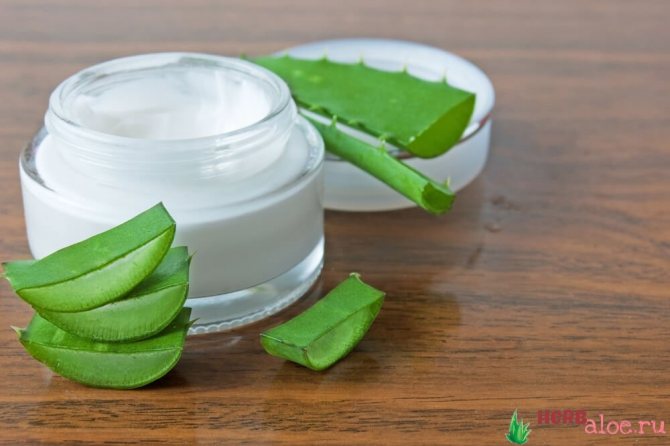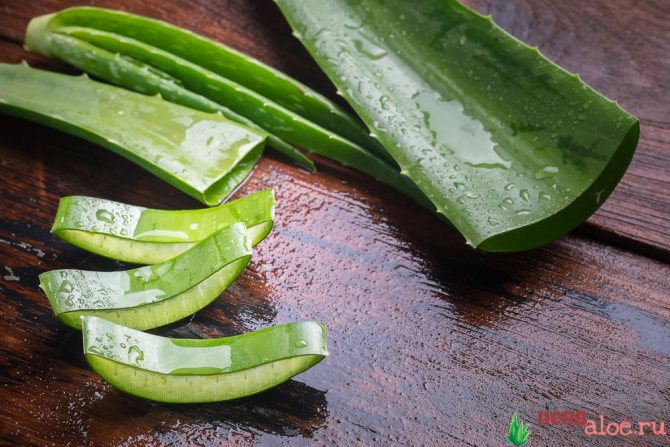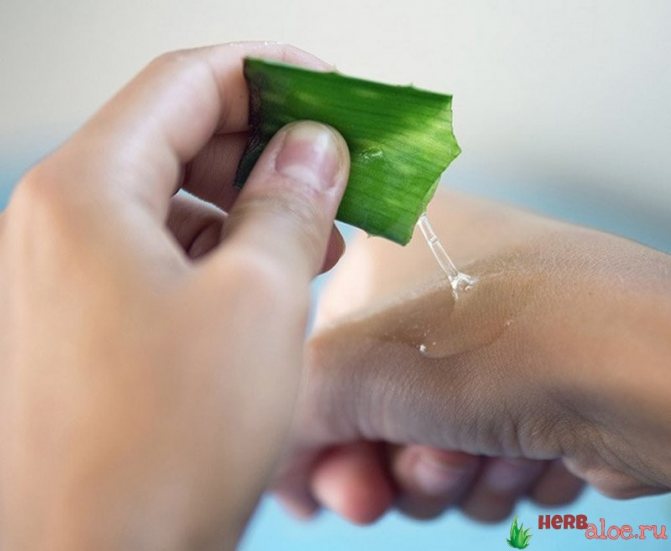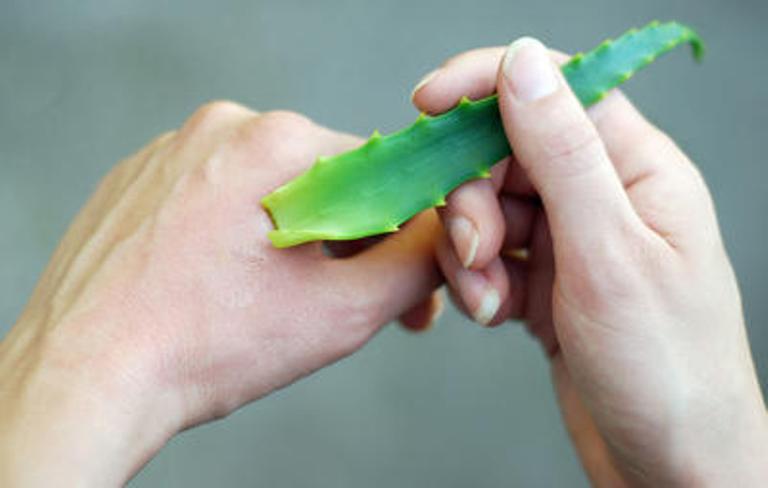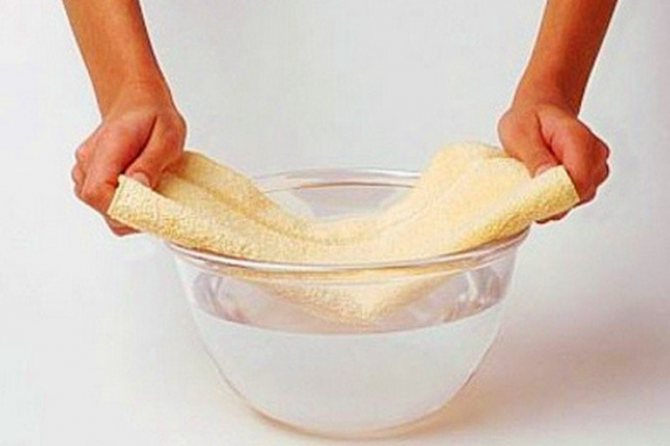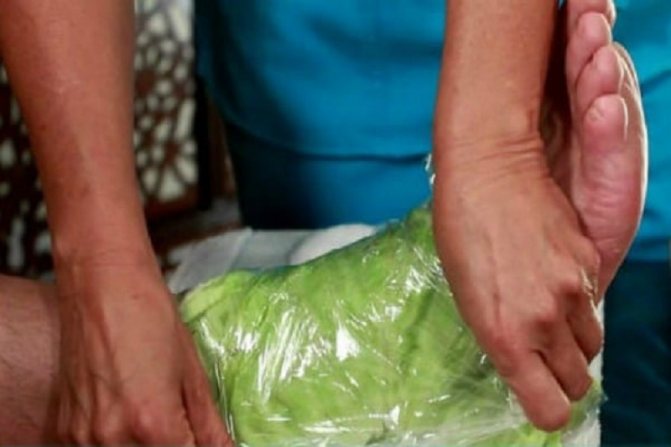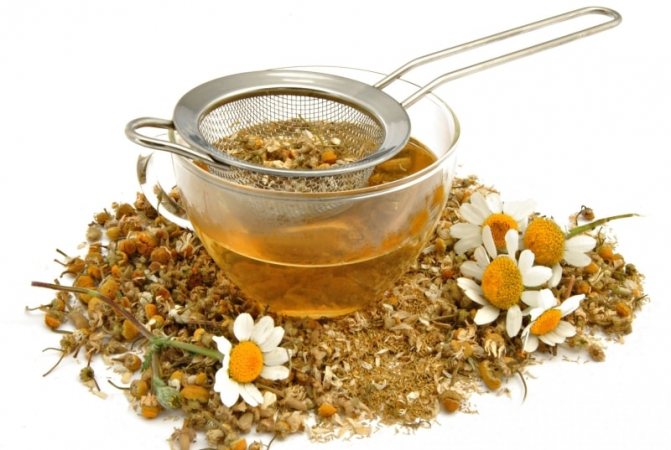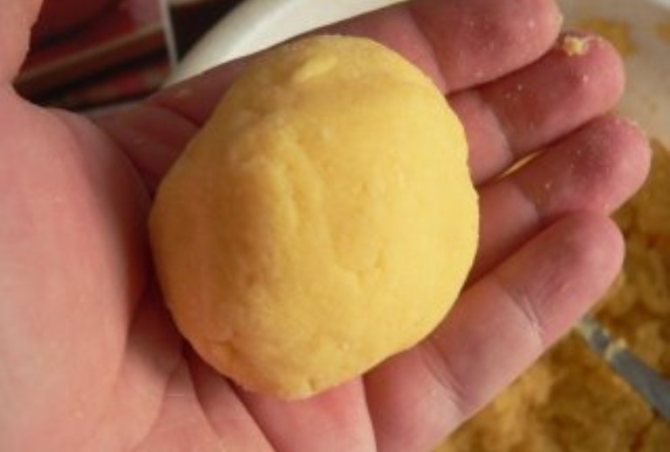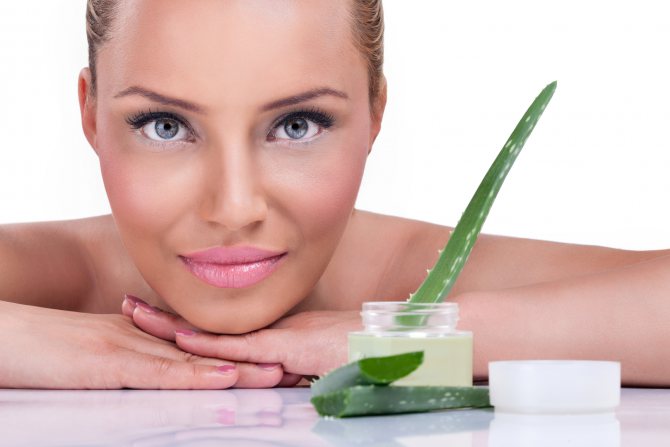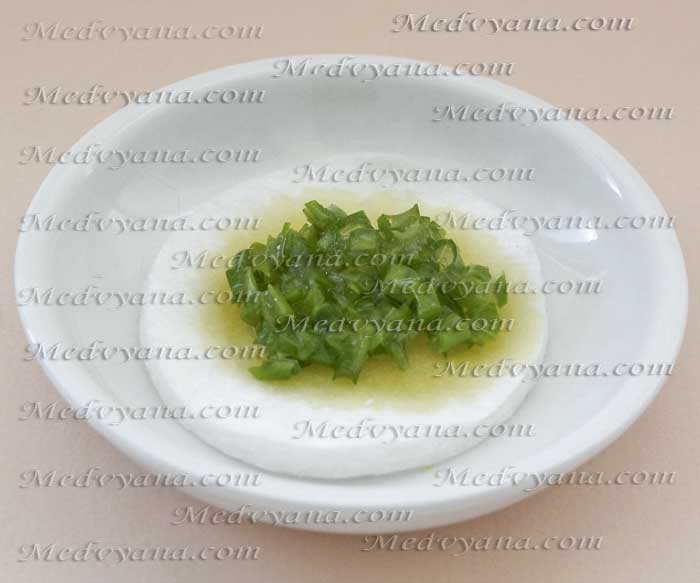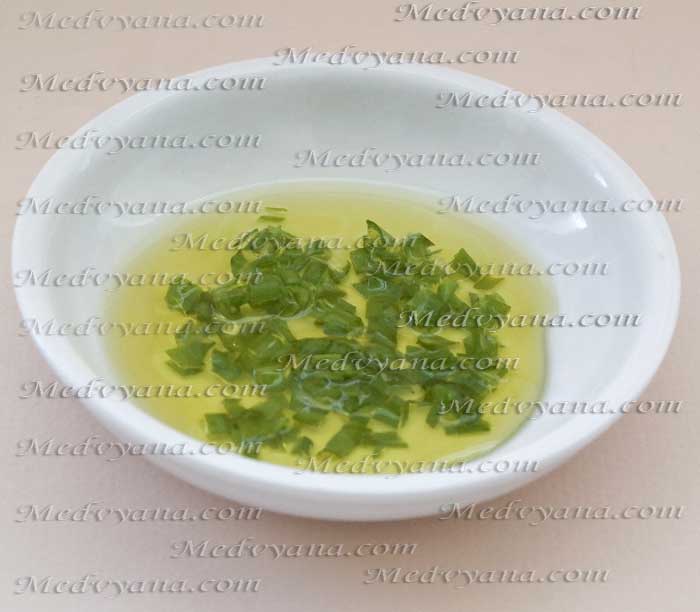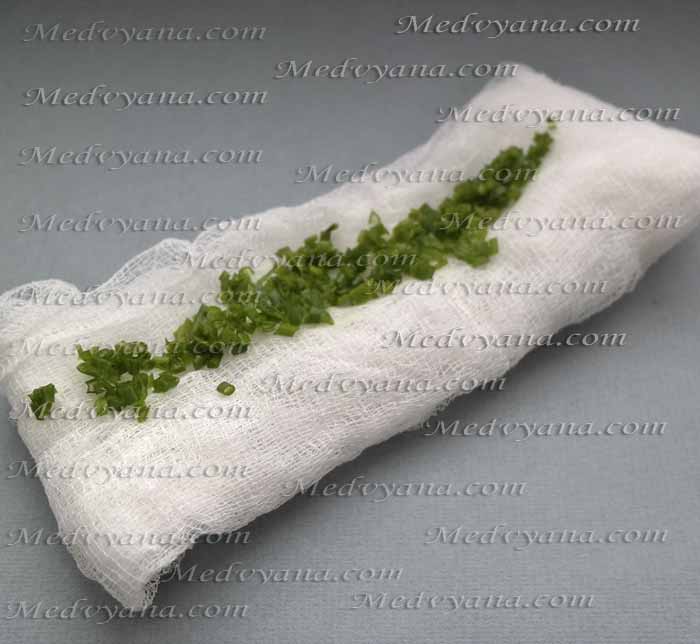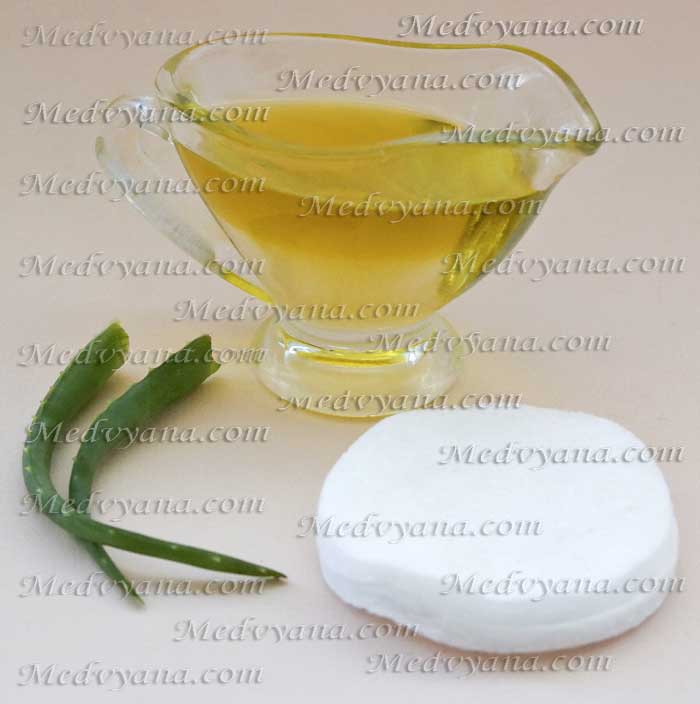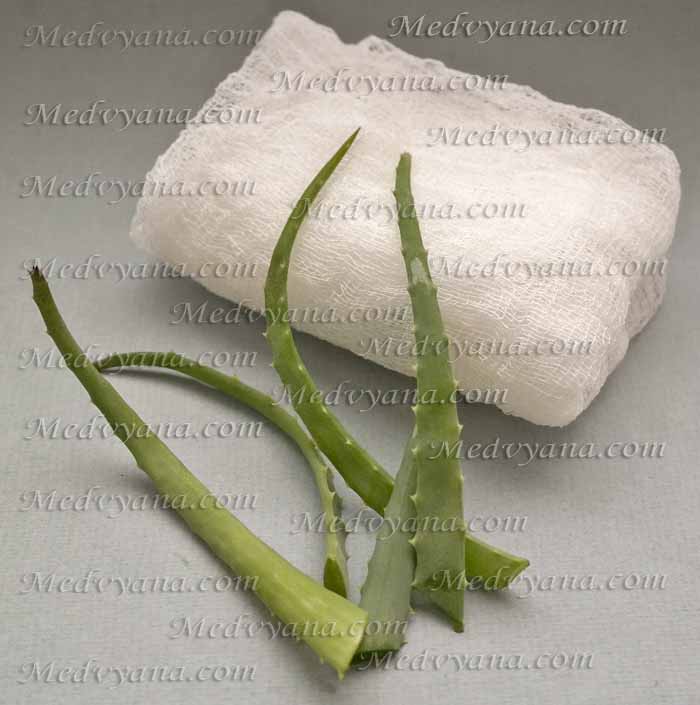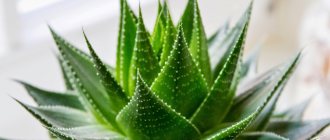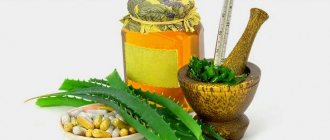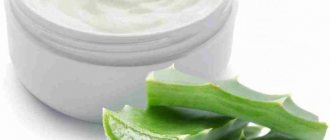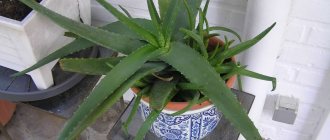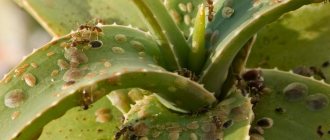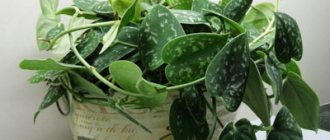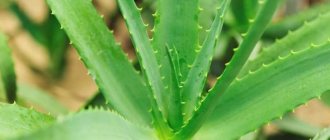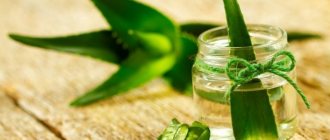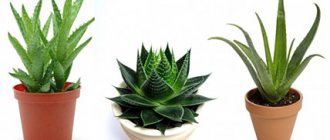Posted in Traditional medicine, Succulents Published 09/15/2018 Comments: Read: 10 min Views: 18 038
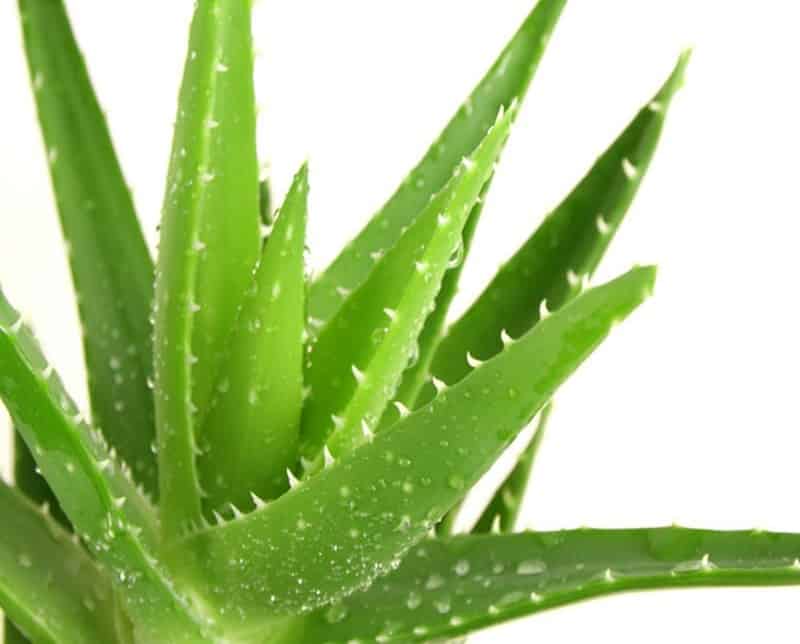
This plant from the succulent family has been used by people for more than one millennium. It was eaten by nomads when they lacked moisture, because it is able to retain water in the leaves. And later, they noticed that aloe has a positive effect on the entire body. To this day, the plant is actively used in various fields of medicine, including for the treatment of diseases and pathologies accompanied by suppuration.
Aloe is beneficial for wounds for many reasons, as succulent has various healing properties. For this, it is highly valued not only by healers, but also by doctors - in official and folk medicine, aloe for skin treatment is recognized as an effective medicine.
How aloe works on skin lesions
Aloe is a common houseplant in the form of a flowerpot, the benefits of which are enormous. Its juice has bactericidal, antiseptic, analgesic, regenerating and stretching properties on the inflamed areas of the skin, destroys pathogenic bacteria (streptococci and staphylococci), cures purulent formations, lipomas, abscesses, heals wounds.
Algorithm of action on boils and wen: when a plant comes into contact with an abscess, it accelerates maturation and helps to quickly remove the contents outside. With boils, aloe effectively removes redness, muffles the inflammatory process, neutralizes itching and pain, and normalizes body temperature.
Reviews of the plant make it a panacea for the treatment of purulent diseases, it is able to treat many skin formations. The tool is effective only with single manifestations of boils. If the problem is chronic, the cause must be determined and appropriate therapy given.
In the absence of a positive result of home treatment for three days, you need to contact a specialist to prevent possible consequences (growth of infection or blood poisoning).
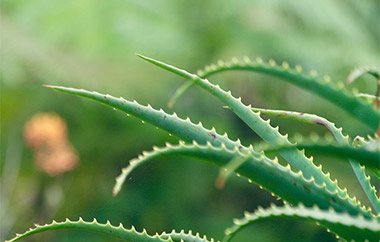

Furuncle and furunculosis: what is in common?
First of all, you should understand what is in common between a simple boil and furunculosis, and whether they can be treated using the same means. So, a boil, or, in a common way, an abscess is a painful, inflamed, pus-filled cavity of the skin. Most often it can occur in places of greatest friction. The reason for its appearance is the inflammatory process in the hair follicle, sebaceous gland and connective tissues that surround them. But the causes of the inflammatory process can be quite varied:
- the presence of pyogenic bacteria in the body - first of all, Staphylococcus aureus;
- weakened immunity;
- hormonal disruptions;
- non-compliance with hygiene rules.
In turn, furunculosis is a chronic purulent-necrotic disease, accompanied by the periodic appearance of abscesses on the body. This disease can be provoked by:
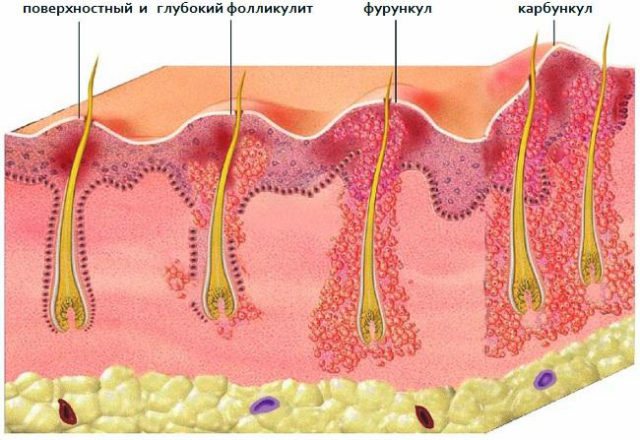

To get rid of a boil on the body, you first need to determine the causes of the boil.
- bacteria;
- non-compliance with hygiene rules;
- diseases of the internal organs;
- prolonged hypothermia or overheating;
- hormonal disorders;
- weakened immunity.
In addition, in some cases, furunculosis can act as a harbinger or even one of the symptoms of diabetes, staphylococcal or HIV infections.
Although the causes of these diseases are often the same, the treatment of purulent formation and the treatment of furunculosis are completely different things, and therefore the therapy should be different.
Instructions for the use of aloe from boils
Before preparing any aloe-based boil remedy, we adhere to the rules:
- Only fresh leaves of the plant.
- Do not use large or small shoots, it is optimal to choose medium-sized leaves.
- We cut off the plant with a well-sharpened knife and rinse thoroughly with running water.
| Recipe | Preparation | Application |
| Lotions |
|
|
| Tincture | To prepare the tincture you will need: |
- aloe shoots - 100 grams;
- vodka (40%) or rubbing alcohol - 100 milliliters.
Wash and grind the leaves, pour alcohol into a glass container. It is necessary to insist such a liquid for one week in a dark and cool room, then strain through cheesecloth.
This method of treatment is contraindicated in children.
There is a recipe for an alcohol-based tincture with water. For this you need:
- 50 ml of pure water;
- 1 tsp alcohol or vodka;
- 2 tbsp. l. aloe juice.
The liquid is insisted in the refrigerator for 3-5 days.
To enhance the effect of the treatment, other components are added to the infusions - calendula, chamomile, agave. These plants have antimicrobial, anti-inflammatory and regenerative properties.
Tincture can be used to wipe the places where chiries are formed. With sensitive skin, this recipe will not work, it is better to use a decoction. To prepare it, take the crushed leaves of the plant and fill them with clean water in a 1: 1 ratio, then you need to boil on the stove for 15-25 minutes, let it brew and strain.
With a decoction or tincture, you can wipe the place of formation of an abscess 2 times a day.
Juice therapy inside is also allowed. Dosage - a teaspoon of juice 3 times a day before meals.
- cut off the leaves (preferably the lower ones);
- place in glass dishes;
- trim the edges of the shoots and cut them lengthwise;
- Using a teaspoon or other device, scrape off the clear flesh from the leaves.
Store this medicine in the refrigerator.
Compresses are done 2-3 times a day, the frequency of change is once every three hours.
- 1 tbsp. l. yarrow, honey, vegetable oil (unrefined);
- 3 tbsp. l. aloe vera juice and St. John's wort;
- 1 chicken egg yolk.
Pour all herbs with 150 milliliters of boiled water, leave to infuse for 15-20 minutes, then add other ingredients and mix the resulting mixture.
For a quick result and complete cure, you need to use plant shoots that are more than 3 years old.
If there is no aloe in the house and there is nothing to get the raw materials for preparing the medicine, the plant extract can be purchased at the pharmacy. Use according to the instructions for the preparation. As part of such a remedy, the ratio of agave juice to alcohol is 4: 1, it is contraindicated for women in position, during lactation and breastfeeding.
Aloem boil treatment should be carried out according to the rules:
- If the appearance of boils is accompanied by other symptoms - hyperthermia, severe pain in the area of education or itching, immediately contact a specialist.
- Strictly adhere to the proportions and quantities of ingredients when preparing ointments or infusions.
- Before starting therapy, it is recommended to go to a doctor's consultation and discuss the issue of risk and lack of consequences after ingestion.
Depending on the place of formation on the body of the chirium (face, armpit, groin, butt, sometimes the ear), the optimal method of treatment at home should be selected.
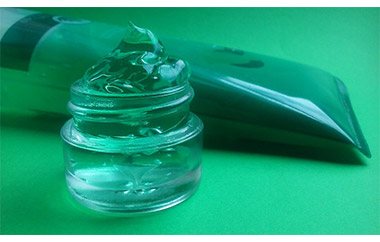

Treatment of abscesses with aloe
Aloe from a boil helps, even if you just apply it to the resulting abscess, making a bandage. But in order for the effectiveness of therapy for a boil to be maximum, it is recommended to prepare an ointment.
The composition of the ointment with aloe from boils is as follows:
With the help of aloe, the treatment of the boil will be completely painless and will not harm other organs.
- three tablespoons of aloe juice;
- one tablespoon of yarrow herb;
- three table boats of St. John's wort;
- one tablespoon of honey;
- one tablespoon of vegetable oil;
- one yolk.
Cooking recipe: Bring water to a boil and pour over the herbs. After they have been infused for 15 minutes, add all the other ingredients and mix thoroughly. The ointment is ready.
It is considered optimal to apply this ointment to the affected area of the body for a period of no more than 20 minutes so that the ointment does not dry out. After the procedure, its remnants should be washed off.
Traditional medicine also has a recipe for aloe compress from a boil. To prepare it you will need:
Aloe juice for boils, can also be used after recovery as an anti-inflammatory, cosmetic to prevent the appearance of new boils
- aloe leaves - 100 g;
- alcohol 40% or vodka - 100 ml.
Cooking. The leaves are thoroughly washed, and then filled with alcohol. Further, the mixture should be infused for a week, after which it is filtered and can be used for medicinal purposes.
The specified infusion should be taken twice during the day, 40 minutes before a meal, 1 tsp. Therapy should be continued for at least ten days and repeated a second time after a week's break.
In addition, you can rub the juice on the area of the skin with an abscess, or take the juice of the plant inside. The optimal dosage is 1 teaspoon three times a day before meals.
How to properly apply aloe leaves to a boil
- Before using the plant as a medicine for boils, shoots must be rinsed with warm water.
- The maximum effect is achieved if you take aloe tree leaves from 3 years old.
- The sheet is pre-cut, correctly apply aloe to the boil with the inside.
- It is necessary to fix such a compress with a tight bandage from a bandage so that the plant adheres close to the boil and does not slip. It helps to draw pus out of the chirium, which makes it easier to release its rod, and then easy removal.
- When using cold lotions from whole leaves of a plant, they should be similarly washed with water, applied to damaged skin areas and fixed well with a bandage.
Contraindications to the use of the plant
- manifestation of allergic reactions or individual plant intolerance;
- children under 3 years old;
- During pregnancy and breastfeeding;
- the presence of diabetes mellitus. People suffering from this disease should use the plant with caution if insulin therapy is being administered in parallel. This combination can cause hypoglycemia (catastrophically low blood glucose).
Side effects most often occur not with external use, but after ingestion:
- Diarrhea, pain in the abdomen.
- Violation of the cardiovascular system.
- Transition to an acute form of liver and kidney disease.
Using aloe leaves in the treatment of purulent formations on the skin, you can easily get rid of single boils. But with chronic furunculosis, the plant is not a panacea. In such cases, you should visit a dermatologist.
The article has been verified by the editors
What is the difference between agave and aloe?
There are about five hundred species of succulents, but only about fifteen hundred have been used in medical practice. But, most often, for the preparation of pharmaceutical and medicinal products, juice and pulp of two types of domestic plants are used: aloe real, it is also called Barbados or aloe vera and an agave - aloe tree.
Agave is considered more useful for skin pathologies, its leaves are filled with healing juice. As for aloe vera, its leaves consist of a gel mass, which also has medicinal properties, it is more often used for the preparation of medicines for internal use.
If both plants are available, then it is better to choose what is more suitable in this particular case, but both succulents have antiseptic properties that are effective in treating abscesses and suppurations.
Uses of aloe
Aloe is one of the most well-known houseplants, and one of the healthiest as well. Although there are a huge number of its varieties in the world, each of them has medicinal properties. It is the juice of this plant that is capable of exerting a bactericidal and bacteriostatic effect, mercilessly destroying staphylococci and streptococci. Therefore, aloe is an excellent medicine for combating purulent infections, one of the manifestations of which are boils.
Aloe and boil are two worst enemies, as aloe helps draw pus out of the inflamed cavity.
Aloe from boils has been used successfully by humans for decades, if not more. Treatment of abscesses with this plant is quite effective due to its antiseptic and antibacterial properties. The principle of action of aloe with boils is that when applied to a boil, the juice of the plant promotes the early "ripening" of the abscess, and after that - the complete removal of pus from the resulting abscess, while removing other symptoms of the inflammatory process - redness, itching, fever and etc.
Features of purulent lesions and the benefits of aloe
The formation of purulent exudate occurs when bacterial, fungal or protozoan pathogens enter the tissue. Any of them is capable of causing the development of inflammatory processes, as a result of which there is an accumulation of fluid consisting of protein molecules, destroyed leukocytes and macrophages. The contents melt and an abscess is obtained.
As a rule, the abscess matures within a week, then the wound is opened and pus comes out of it. At the final stage of the abscess, the damaged tissues are restored, the wound is tightened, covered with even skin or scarred.
Unfortunately, the purulent mass is far from always able to leave the abscess on its own. Often it accumulates deep in the tissues, and the pus must be given time to rise to the surface layers. However, in this case, there is a risk of complications when particles of a severe cutaneous abscess can enter the bloodstream, provoking the development of sepsis.
To avoid complications, it is recommended to use external medicines that are able to draw pus from the wound to the surface, as well as have a healing, regenerating effect on the affected tissues. Aloe juice has a similar effect, its active substances stimulate the outflow of purulent fluid that accumulates in wounds, preventing the progression of an abscess.
In the treatment of purulent wounds, medicines with aloe extract allow you to quickly achieve positive results:
- anesthetize the damaged area;
- reduce the inflammatory process;
- eliminate microbial flora and disinfect the wound;
- soften fabrics and repair damaged areas.
In addition, the effects of aloe extend to the immune system as well. The plant is a biogenic stimulant, it activates and maintains the immune system, which fights against hostile agents. Therefore, in case of skin diseases and injuries, it is recommended to take aloe juice and preparations with this component inside.
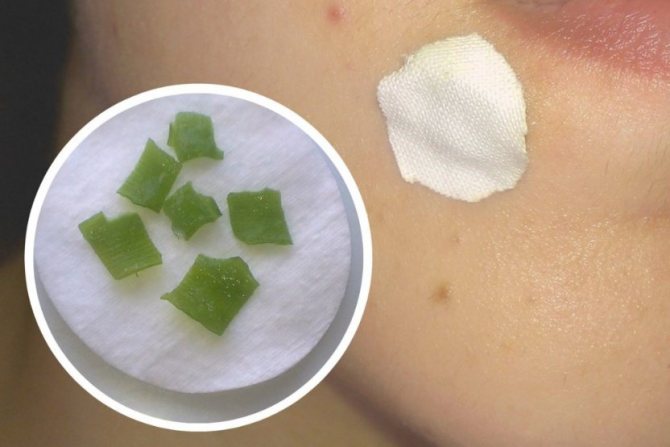

Useful composition and medicinal properties of aloe
Aloe leaves contain allantoin, a substance that has a powerful moisturizing effect
... It is thanks to allantoin that aloe vera is used today by most cosmetics manufacturers, and it is even called a "vehicle". Penetrating deep into the skin, allantoin delivers other components there, retains moisture in the skin and promotes regeneration processes, helping to restore cell structure, heal wounds and damage.
Besides, aloe has antioxidant properties
, since it contains vitamins E, C, group B and beta-carotene, which is converted into vitamin A in the body - these vitamins are effective protectors of cells from oxidation.
In expensive moisturizers and gels, aloe vera is used especially often; it is also included in hair care products.
The leaves of this plant can be used at home in their natural form.
The juice that comes out of them should be immediately rubbed into the skin: it heals abrasions, cuts, burns and inflammations; soothes, smoothes wrinkles, eliminates bruises, reduces itching and swelling from insect bites.
Aloe juice is used in the treatment of many skin diseases.
: acne, eczema, ulcers, dermatitis, psoriasis, minor cosmetic defects.
There are more than 200 biologically active substances in aloe vera - these are vitamins, minerals, amino acids, enzymes, etc. The composition of this plant has not yet been fully understood, and scientists are constantly discovering its new properties. The effectiveness of the effect of aloe on the body is explained precisely by the joint activity of all its components - penetrating into cells several times faster than ordinary water, these substances actively remove toxins and toxins, cleansing the entire body.
Aloe has unique regenerating properties
, since it contains 18 of the 22 amino acids we need - the building material for cells. Cells are renewed 6-8 times faster than under normal conditions; collagen and connective tissue are quickly formed, and dead tissues are destroyed - they are processed by special enzymes. The cosmetic effect of aloe vera is explained by this - regeneration occurs very quickly, aging and the appearance of wrinkles slow down.
Since aloe is used very widely, and there are a great many recipes with its use, here we will only talk about the treatment of some skin problems, cosmetic face masks and ways to strengthen hair with it.
How to use the plant correctly?
Not every plant and not every leaf has healing properties. When choosing, it is worth considering the following features:
- As a rule, a flower that has reached 3-5 years of age is used for medical purposes. The leaves of a younger succulent do not contain enough nutrients, and after 7 years their concentration is steadily decreasing.
- For the treatment of an abscess, it is better to take the lower leaves of aloe, preferably with dried out tips, at least 15 cm long - these signs indicate that the plant is suitable for the preparation of medicines.
- Before cutting, it is recommended not to water the plant for 2 weeks, this contributes to the fact that a greater amount of useful trace elements is concentrated in the leaves.
- 3-4 days before cutting, you should put the pot with the plant in a dark place.
- The leaves are cut closer to the trunk, they must be immediately wrapped in dark paper or foil and sent to the refrigerator. At least 2 days, or better - 10-14 days.
For the treatment of festering wounds, both fresh succulent juice and the formulations to which it is added are used. How to get the healing liquid correctly so that it retains maximum benefits?
Effect on skin regeneration
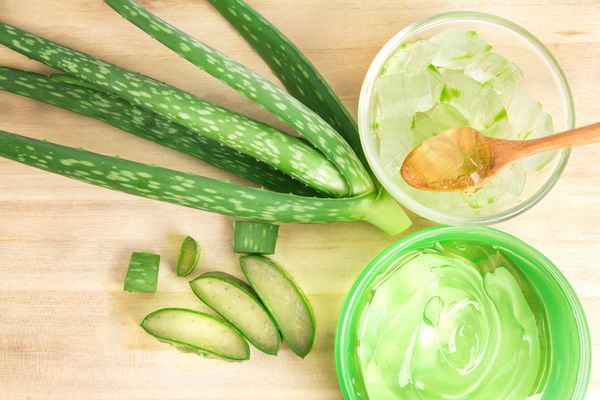

It has long been known that folk remedies are not inferior in their effectiveness to pharmaceutical drugs. Aloe juice is used to treat various types of burns. The juice is used both as an independent agent and as an auxiliary. It all depends on the degree of damage. It is noteworthy that this medicinal plant will not only speed up the healing process, but will help to avoid the formation of scars and scars.
Aloe juice is the basis for many medicinal mixtures that are used for external use. Aloe pulp can retain moisture concentration for a long period of time, thereby relieving inflammation and protecting the wound from the penetration of harmful bacteria.
In addition, aloe draws pus out of the boil. This formation can occur anywhere on the body. Usually a boil gives a lot of trouble to a person, primarily painful sensations. Squeezing the abscess yourself is not worth it. He needs to be given time to ripen. A purulent head appears only after a few days.
Now it's time to get the pus out. Aloe is just the simplest and most effective remedy that can draw out pus from a boil.
A bruise is another unpleasant formation that often appears on the body. Of course, you want to quickly get rid of this painful speck, which was the result of a bruise. Pharmacists offer many different products today, but you can use lotions with aloe juice for bruises.
As you can see, the belief of our ancestors in the healing power of plants was not in vain. And now, when pharmacies are overflowing with medicines, we can use what nature itself has given us.
Juice preparation and storage
To prepare a healing natural elixir from a perennial, you can use the following method:
- leaves kept in the cold are crushed - with a knife or in a blender;
- the resulting gruel should be poured with cool boiled water in a ratio of 1: 3, mix;
- the container with the liquid is covered with a lid and placed in a dark place for a couple of hours;
- the mass is filtered and wrung out through cheesecloth folded in several layers;
- the medicine is poured into a glass dish and kept in the refrigerator for 2-3 days.
The juice prepared in this way does not need to be diluted with water, the product is used in pure form or is added to multicomponent medicinal compositions.
And you can also prepare a concentrated, rich in healing properties of aloe juice. To do this, you can follow the previous recipe, but do not pour the gruel with water, but immediately squeeze out the useful moisture.
There are recipes that allow you to harvest herbal medicine for future use, since it can be perfectly stored for a long time:
- the freshly squeezed juice is poured with alcohol: for 400 ml of liquid, 100 ml of alcohol;
- the product is infused for one and a half weeks in a dark place.
Before use, it is recommended to dilute the medicine with water, taking 1 part of the product and 3 parts of water.
Ways to use aloe for healing
Agave leaves are used to prepare medicines for wounds. Cut off only the lower ones, more fleshy, mature than the upper ones. The tips should be dry, the length should be from fifteen centimeters. A two-three-year-old aloe flower has a healing effect, which was not watered before cutting for 14 days. The season does not affect the collection of raw materials.
In pure form
When cutting an aloe leaf, a liquid is released from it, bitter in taste, and is produced in the secretory cells of the plant.To obtain maximum volume, grind well. The squeezed juice must be used to heal the wound immediately, without allowing long-term storage. Moreover, it is better not to treat the skin with fresh raw materials squeezed out of the sheet, but to turn it into infusions, ointments, oils, gels. Exceptions are spot processing:
- acne;
- colds on the lips;
- wrinkles;
- baldness zones.
Instillation of small doses (2 drops) into the nasal passage is used for rhinitis, including allergic ones.
To enhance the properties of the agave, you can make biostimulated juice. The principle of action is based on the fact that a plant in an unfavorable situation begins to produce biogenic stimulants, which act as powerful regenerators.
Algorithm for making aloe juice from a wound:
- Wash and dry the leaves.
- Fold uncut into a glass container.
- Cover with paper.
- Put away in a cold place.
- Get it in 14 days.
- Remove dark parts.
- From the rest - squeeze out the juice.
Such a remedy can be used to heal a wound on its own or used in the preparation of other forms.
With other ingredients
When treating internal diseases (ulcers, pharyngitis, constipation, arthrosis), the juice must be mixed in various proportions with water, fruit drinks, compotes. The same as in the treatment of skin defects. Apply a mixture of aloe and honey to burns. Cut leaves 1 to 1 are immersed in honey, kept in a dark place for one month. Stir, strain the raw materials, apply in the form of compresses from sterile tissue or gauze. Deep lesions involving a large piece of skin should not be treated.
An external aloe-based remedy for treating open wounds is prepared from glycerin, agave and lemon. One hundred grams of leaves with thorns removed are treated with a mixer or in a blender, diluted with the same volume of cold boiled water. Then add 100 g of glycerol, 5 ml of lemon juice. Stir again, incubate in a cool dark place for 24 hours, strain, put in a refrigerator for storage. Apply lotion for wounds, bedsores, frostbite, ulcers.
Ointment for boils and other abscesses:
- Prepare three tablespoons of aloe and St. John's wort each.
- A large spoonful of honey.
- 5 ml of any vegetable oil.
- Mix all plants.
- Pour boiling water over for a quarter of an hour.
- Cool down.
- Put honey, butter.
- Mix.
- Apply under a bandage or gauze napkin for 10 minutes, repeat until healing.
- Wash off with cool water.
Pharmacy products
| Release form | Structure | Indications | How to apply |
| The juice | Liquid aloe extract - 80%, ethyl alcohol - 20% | Spastic constipation, inflammatory diseases of the stomach and intestinal tract, wounds. | A teaspoon with water, three times a day orally before meals for up to a month. Apply a compress to a skin defect for up to 30 days. |
| Gel | Agave Concentrated Juice | Hematomas, scars, cuts, abrasions, burns, herpes, dermatitis, frostbite, acne, abscesses, alopecia. | External lubrication of the affected areas until recovery. |
| Extract in injection ampoules | Liquid from the leaves | Diseases of the eyes, oral cavity, ulcers of the gastric and intestinal mucosa, gynecological diseases, etc. | Under the skin as directed by a doctor. |
| Liniment | Fresh juice, castor oil, eucalyptus oil | Radiation and other burns, epidermitis. | Outwardly, up to three times every 24 hours under a bandage in a course of 14 or 28 days. |
General guidelines for the treatment of abscesses
Using external preparations with aloe for pus, it is recommended to adhere to the following algorithm:
- The affected area is pre-treated with an antiseptic - you can use hydrogen peroxide, Miramistin, Chlorhexidine, etc.
- Aloe ointment is applied to the wound and covered with a sterile napkin; you can also use a compress soaked in a medicinal composition.
- Everything should be carefully fixed using a dressing material.
- The dressing and medication are changed depending on the advice of a specialist or instructions.
When using aloe vera or agave for purulent wounds, you can quickly get rid of unpleasant symptoms and avoid possible complications.
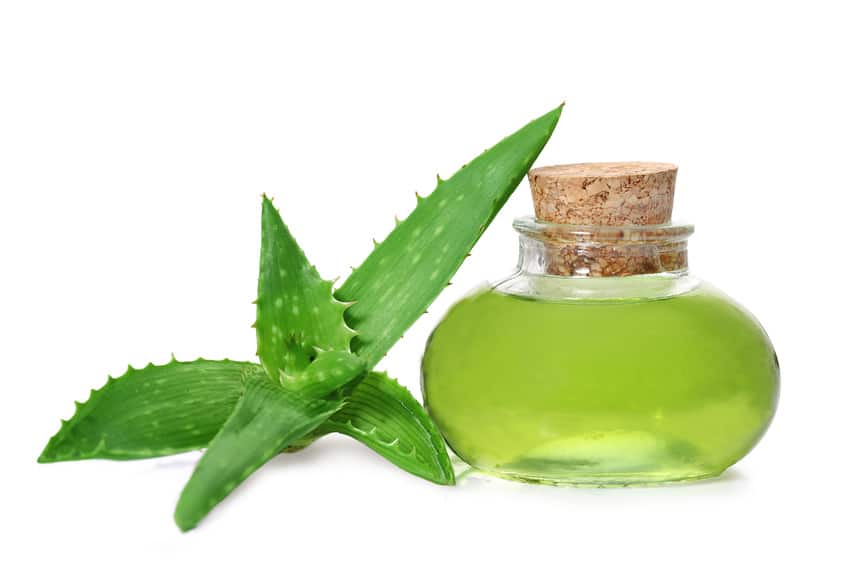

Preparation of the affected area
Before applying the aloe compress to the wound, the affected area must be prepared:
- Eliminate the cause of the burn immediately. For example, if the burn is sunny, go to a shaded area.
- Determine the degree of burn. So, a grade I lesion affects only the epidermis layer. Redness appears at the site of the lesion, pain is present. Second degree burns are characterized by blistering and severe pain. Grade III lesion already penetrates all layers of the skin. Such burns can cause swelling, but they practically do not hurt, because the nerve endings are affected.
- We cool the affected area. This manipulation will help "draw out" the heat from the wound and soothe the skin before applying the aloe. You can put the affected area under running cold water for 15 minutes or apply a cloth soaked in cold water to the wound.
- Next, cleanse the wound with soap suds. Then we rinse again under cold water and pat dry with a towel.
Note that rubbing the skin with effort should not be, because the skin may crack or blister.
Remedies with aloe for the treatment of suppuration
Regardless of what are the causes of the inflammatory, purulent process in the tissues, traditional medicine recommends using preparations with aloe, which can be purchased at the pharmacy or prepared at home using a medicinal plant.
The best recipes for purulent wounds:
Herbal compress
If there is a ready-made biostimulated (cold-aged) juice, then it is better to use it. In other cases, you can take a leaf of a plant, cut it lengthwise, squeezing out the liquid and pulp. A multilayer gauze napkin is soaked in the product and applied to the abscess.
Which wounds are used to heal
Aloe is used to heal wounds of various origins. For the treatment of defects, it is necessary to use various dosage forms containing the plant. They are purchased in pharmacies, cosmetic departments of stores, and prepared at home. The ointment is used for chronic skin diseases: eczema, psoriasis, seborrhea. Water infusion treats scuffs, wounds, abrasions, burns. They are treated with macerates - oils from the juice of the leaves. For sun damage, skin cuts, you can apply a gel with an extract.
Other pathologies, in the treatment of which aloe is used externally:
- gingivitis;
- stomatitis;
- acne;
- acne;
- herpes;
- alopecia;
- arthritis;
- furuncle;
- radiculitis;
- eye diseases.
Features of using the tool
The benefits of aloe for healing and wound healing are undeniable, however, in some cases, it is not recommended to self-medicate. For example, you shouldn't delay seeing a doctor if you experience the following symptoms:
- temperature increase;
- severe soreness;
- itchy sensations.
In addition, if the applied method of treatment does not work and the condition of the wound does not improve within 3 days, it is also worth visiting a specialist.
When the plant is used externally, there is only one contraindication - hypersensitivity to the substances that make up aloe.
The main rules of treatment
Firstly, if, along with the appearance of a purulent formation, you also have symptoms such as fever, severe pain, itching, etc., be sure to consult a doctor.
Secondly, if in the course of treatment with aloe there is no improvement within three days, this is a reason for consulting a doctor.
Thirdly, using aloe therapy, it is necessary to adhere exactly to the proportions in the preparation of the ointment and the recommended dosages of infusions.In addition, it is advisable to consult with your doctor about the absence of the risk of having negative reactions after oral administration of the juice of the plant.
Summing up, it should be noted that although aloe from boils, purulent infections and formations is an excellent medicine, it should not be considered a panacea. In isolated cases of the appearance of purulent formations, this plant can be absolutely freely used for medicinal purposes. But if you have boils periodically, aloe alone will not help. Here you need the help of a doctor and a complete examination to identify the causes of the disease. After all, no matter how healing the effect of the plant may be, it can neither restore the hormonal background, nor increase immunity, nor, which is especially important, protect against the development of diseases of the internal organs, if such were the cause of furunculosis.
Aloe is a valuable plant, the components of which (rhizomes and leaves) are included in many medicinal preparations. The flower is easily grown at home on a windowsill. With its help, you can independently prepare funds for the treatment of external wounds and internal pathologies.
The plant is a powerful natural biostimulant, useful properties are known for external and internal use. If you put aloe on a wound, tissue regenerates quickly.
The chemical composition of the leaves:
- water;
- esters;
- acids (citric, hyaluronic, cinnamic, salicylic, etc.);
- tanning agents;
- resin;
- plant polyphenols;
- steroid molecules.
Of the minerals, aloe contains sodium, manganese, magnesium, phosphorus, iron, chlorine, calcium, chromium, potassium, zinc, cobalt. From vitamins - almost the entire group B, E, C.
Amino acids:
- methionine;
- valine;
- lysine;
- leucine;
- threonine;
- isoleucine;
- phenylalanine.
Acids, vitamin C are responsible for antibacterial activity (against staphylococci, viruses, streptococci, fungi) when used on aloe wound.
Anti-inflammatory, analgesic, antiseptic action is given by phenolic acid, bradykinase enzyme, steroid molecules. Vitamin C, catalase enzyme, anthraquinone (organic matter) are responsible for tissue regeneration. Local immunity is increased by polysaccharides, magnesium.
Help with boils
In order for pus from a pimple, which is an acute inflammation of the hair follicle, to come out safely and without complications, it is necessary to use only plants older than 3 years. Young seedlings cannot boast of a strong bactericidal effect that can cope with resistant streptococci and staphylococci.
It must be remembered that a boil, which differs from an ordinary pimple in increased size and increased soreness, can appear in any part of the human body.
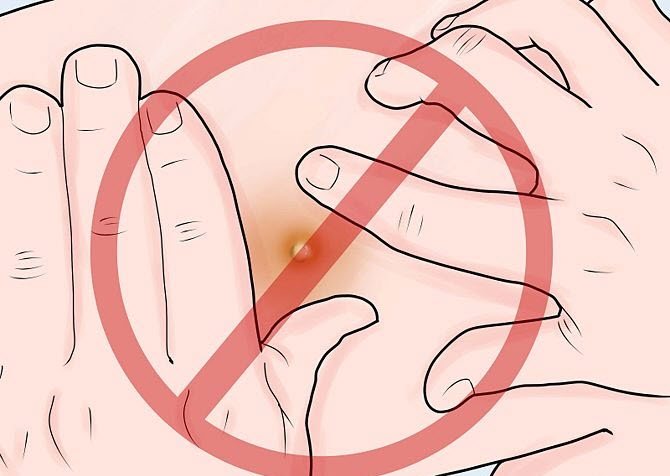

The key mistake that patients make when they first encounter an unaesthetic and unpleasant neoplasm is an attempt to squeeze out the sore. However, the pus must be given time to rise to the surface tissues. Only then will the exudate be successfully drained from the body.
Compress
The long process of "ripening" of pus, stretching on average for 4-5 days, looks like this:
- Formation of a red, hard swelling that is uncomfortable.
- Growth of a pimple into a big bump.
- Finally, the formation of a white-yellow head, which gradually forms an open wound.
It is aloe that will help to draw out exudate to the upper layers of the dermis as soon as possible. The correct procedure for applying a plant to an abscess includes several stages:
- Disinfection of the boil.
- Cutting, thoroughly washing, slitting and smearing a fresh leaf of the agave with a drop of iodine.
- Applying to the boil and fixing the compress with a bandage or plaster.
The patient will need to change the dressing every 2-4 hours. So that the pathogenic microorganisms that provoked purulent inflammation are not used to the action of only one remedy, Vishnevsky's ointment.After a few procedures, it will be possible to notice an improvement in the condition - the skin color will normalize, the edema will subside, itching, redness and increased body temperature will disappear.
After the pus begins to come out of the wound, the affected area will need to be carefully treated with hydrogen peroxide, and for additional disinfection and final healing, apply a compress soaked in boiled sodium chloride solution to it.
Important! Suppuration cannot be defeated if a patch that does not allow air to pass through is used to fix the compresses.
To combat boils, a special ointment can also be used, made from:
- 3 tbsp. l. plant sap;
- 1 tbsp. l. yarrow;
- 3 tbsp. l. St. John's wort herbs;
- 1 tbsp. l. honey;
- 1 tbsp. l. vegetable oil;
- 1 yolk.
The water is brought to a boil, after which the herbs mixed with each other are poured. The solution is infused for 15 minutes. Then the rest of the ingredients are added.
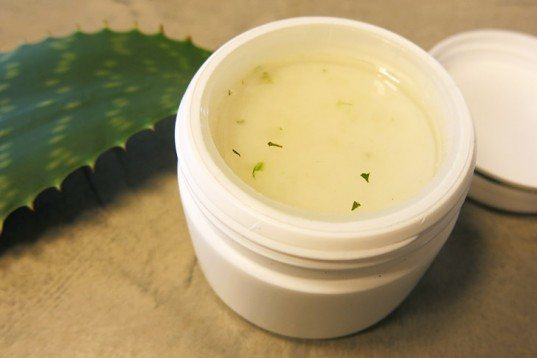

The ointment can be considered ready after mixing. The mass is applied to the inflamed area for 20 minutes, and after that it is washed off. It is required to ensure that it does not have time to dry on the skin.
Infusion
From the leaves, you can independently make a medicine for oral administration. To do this, they are taken in a volume of 100 g and filled with 40% alcohol or vodka. The infusion is left in this form for 7 days, after which it is filtered and consumed twice a day, 40 minutes before a meal, 1 teaspoon. The general course is at least 10 days. After that, a break for a week, and then the resumption of therapy in the same mode.
Aloe Vera Wound Treatment
With open wounds, the aloe leaf is simply cut, applied with the pulp to the wound and fixed with a bandage or plaster. During the day, the leaf is changed several times, and the wound begins to heal.
Topical wound healing can be made with aloe, glycerin, and lemon juice.
... To do this, cut thorns from the leaves, mix them (100 g) in a mixer with the same amount of cooled boiled water, then add glycerin (100 g) and lemon juice (1 tsp). After thoroughly stirring again, the mixture is insisted in a dark cool place for 24 hours, filtered and stored in the refrigerator. Used for wounds, bedsores, ulcers, frostbite, burns.
Treatment for burns
As a result of burns, purulent and watery blisters can form on the skin. It is possible to get rid of painful wounds with the help of an agave only if it is applied immediately after receiving damage. If the integrity of the dermis is broken, the squeezed juice must be boiled over low heat for 2 minutes, then cooled, soaked in a cotton pad, applied to the affected area and bandaged. The compress is changed every 4 hours, and the full course of treatment is 4 days. The improvement in well-being should occur within a few hours after the first dressing is applied to the wound.
In case of minor damage to the integument and a slight burn with reddening of the skin, the injured area is simply washed with cool water and wiped with plant juice as often as possible. The color of the covers will return to normal the next day. To get juice, the sheets must be minced and squeezed using gauze.
Important! For patients with severe and deep burns, doctors categorically do not recommend using aloe immediately. Its use, accompanied by the vigilant supervision of the attending physician, is permissible only 4 days after the start of professional treatment.
Cleansing and healing wounds
For the treatment of trophic ulcers, cuts and wounds, you cannot think of a faster-acting antiseptic. If the case is complicated by the appearance of a cloudy exudate inside the lesion, the juice is used together with the pulp. In order not to draw out a purulent formation for a long time, and, possibly, ineffectively, you will need to use the old and proven method:
- Remove the skin from the sheet.
- Apply the sheet to the injured area.
- Fix with a plaster or bandage.
Done! Aloe is known to draw out pus very quickly, while at the same time exerting a regenerative effect on the skin that promotes quick healing of cuts. This effect turns out to be invaluable in the fight against aphthous stomatitis. The centenarian also has to draw out pus from a pimple, but already in the mouth. A tampon soaked in juice should be applied to the painful sore and left for a while, then replaced with a new cotton swab.
Folk remedies
Home remedies are used to eliminate a superficial non-extensive abscess. Folk remedies for abscesses are often used, made from aloe, onions, garlic, cabbage and birch leaves, and beets.
Application of aloe
The abscess is eliminated using the pulp of aloe leaves and juice from them. In the thickened juice of the plant, useful substances are contained in a concentrated form. Before squeezing the juice from the leaves, they are kept in the refrigerator for up to 15 days.
Aloe destroys harmful microorganisms, eliminates inflammation... It can help draw out pus from wounds. The plant is used as follows:
- Lotions are made with juice. A cotton pad soaked in aloe is applied to boils, acne, and wounds.
- The pulp should be applied to the abscess. The bandage is done in the evening, left until the morning. The wound is cleared on the second or third day.
- Acne, acne and boils are treated with juice or alcohol tincture.
How else to draw pus out of the wound? You can use Kalanchoe leaves and juice from them. The plant has a healing effect similar to that of aloe.
Using the bow
For the treatment of an abscess, raw and boiled or baked onions are used. Onion use options:
- Cut off part of the onion, apply to the abscess for two hours. The procedure is done twice a day: in the morning and in the evening.
- Onion gruel is applied to a napkin, fixed on the wound, and left for two hours. Bandages are applied twice a day. Raw onions can cause burns; it is forbidden to keep the application with it for more than two hours.
- Take warm baked onions, cut off half, apply to the abscess, secure with a warm bandage. After two hours, apply the second half of the onion.
- They turn baked onions into gruel, add one tablespoon of flour and honey. The mixture is distributed on a napkin, fixed on the lesion focus. The compress is done until the abscess ripens.
Garlic recipes
Garlic helps to solve the problem of how to draw out pus from a wound. Compresses are made with him:
- Bake the garlic head, make gruel out of it. Prepare small shavings from laundry soap. Combine the ingredients to form a cake. Then attach it to a boil or wound, secure with a bandage. Leave the application for four hours.
- The pus from the pimples helps to draw out the slices cut from the cloves of garlic. They are fixed on top of purulent formations.
- Old abscesses help to remove gruel from raw garlic... The napkin with it is fixed on the sore spot. Applications are changed up to eight times a day.
Ointment that removes abscesses
To carry out treatment at home, a honey ointment is prepared: they take a fresh egg, separate the yolk. Honey and butter are added to it (1 tablespoon each). Pour flour or pharmacy clay into the mixture. They make it so thick that it is possible to form a cake, and fix it on the abscess. Three lozenges are required for one day of treatment. Applications are changed at regular intervals.
Internal abscess treatment
How to treat abscesses on the finger, under the nail plate or in the deep tissues of the epithelium? Hot baths help to remove any internal abscess. For steaming, a solution is prepared from hot water, salt, soda and calendula, infused with alcohol. For 250 ml of water, take 1 teaspoon of each remedy.
Compresses
Treatment of abscesses with folk remedies is effective if you make applications with various plants.
- Beet and potato application.Apply gruel from beets and potatoes to the site of inflammation. A fresh compress should be applied every 2-3 hours.
- Fasten cabbage or birch leaves with a bandage on the abscess.
- Apply to purulent wounds applications from carrots, turned into gruel. Change the dressings when the carrot puree is dry.
- Purulent contents from the wounds draw out a powder made from dried nettle, calamus rhizomes and birch charcoal.
Flushing
Before applying pus-stretching agents to abscesses, it is necessary to sanitize the foci of inflammation with antiseptic solutions. For washing and disinfecting abscesses, decoctions are prepared:
- chamomile;
- calendula;
- sage;
- plantain.
The broth is made from 500 ml of boiling water and one tablespoon of any herb. The mixture is placed on fire, simmered for 15 minutes, cooled, filtered. The product is used for local baths. The damaged area is dipped in the broth for 30 minutes. Do 2-3 cleansing procedures a day.
It is permissible to self-medicate skin abscesses if the abscesses are small, and the use of folk remedies or medicines brings noticeable relief. A doctor should be involved in the treatment of serious purulent lesions. Prolonged presence of purulent exudate in the wound causes blood poisoning, which can be fatal.
Features of pulling pus from open and closed wounds
The formation of purulent masses is a kind of protective reaction to the ingress of infectious agents onto damaged skin. Reproduction of microorganisms occurs under the dermis and on its surface. The immune system signals pathological processes to blood cells. Leukocytes are sent to the site of inflammation. The reaction of binding bacteria to red particles ends with suppuration of the skin area.
Both pathological processes on the skin are treated according to a specific algorithm. The choice of the drug that draws out the contents will depend on the type of wound.
The general rules for the treatment of open and closed wounds on skin with pus are the following principles:
- The application of the product with pulling properties takes place under sterile conditions. The doctor should treat the working surface of the skin, hands. If the patient is being treated for pus on his own, you need to adhere to similar principles.
- When an allergic reaction to a drug occurs, its use is stopped. The drug is replaced with another medication with pulling properties.
- Closed wounds at the stage of abscess formation cannot be treated with Vishnevsky ointment. Liniment can cause increased discharge of pus. The pathological content spreads to the deep structures of the skin, to adjacent tissues.
It will be possible to effectively draw out pus from a pimple at home if you follow the rules.
Aloe on an open wound. Tip 1: How to handle open wounds
Everyone runs the risk of getting an open wound. If the wound is small enough and you do not want to go to a medical facility, use the advice of traditional medicine. They can help you cleanse the wound effectively and avoid infection.
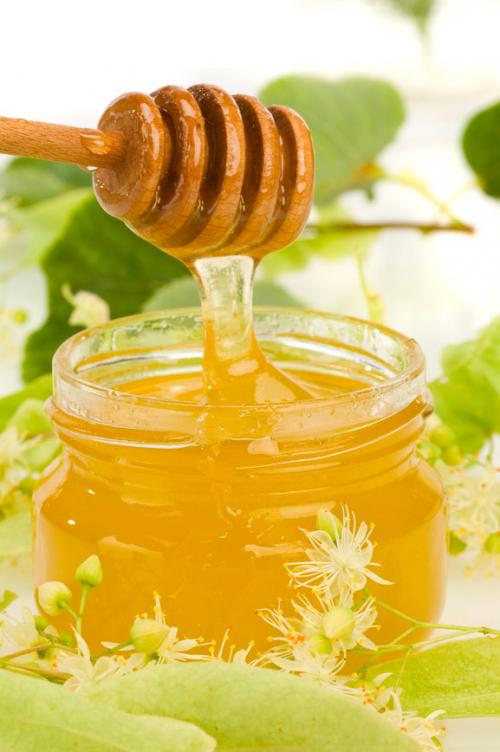

Instructions
1
Squeeze the juice from a whole fresh yarrow plant. Apply the juice to the wound. Very good for stopping bleeding. For the same purpose, apply crumpled fresh nettle leaves to the wound.
2
Burn the barley, add some rose oil and petroleum jelly. Apply the resulting ointment to the wound. It will help you heal faster.
3
Apply the succulent side of the ash bark to the wound. Change the bark 3 times a day.
5
Crush plantain leaves and apply to non-healing wound and change every 2 hours.
6
Every 2 hours throughout the day, apply a cotton swab with crushed fresh maple leaves to the wound.
7
Apply goat willow bark tea to the wound. To prepare it, pour 20 g of bark with a glass of boiling water and cook over low heat for 20 minutes.
8
Boil 15 g of walnut leaves, previously chopped, in half a glass of water, continue to heat over low heat for half an hour, pour a tablespoon of sunflower oil and leave to infuse for 10 days. Then place in a water bath and keep for at least 3 hours. Strain and heat for another half hour. Add the required amount of wax or petroleum jelly. Use as an ointment to apply to a wound.
9
Prepare a bandage with crushed viburnum bark and apply to a bleeding wound every 3 hours. Also apply a film of pine bark to the wound, changing it after 3 hours.
10
Grind fresh leaves of St. John's wort and sage in equal amounts and rub with inner lard. Squeeze through cheesecloth. Store the resulting ointment in the refrigerator in a jar with a closed lid.
11
Tear off a leaf of aloe, cut it lengthwise and attach it to the open wound. Keep it on for 5-6 hours.
Tip 2: How to treat an open wound
An open wound is a gaping violation of the integrity of the integument of the skin and mucous membranes. This type of damage is dangerous with possible complications - bleeding with the development of acute anemia, shock, accompanied by dysfunction of vital organs and the development of infections.
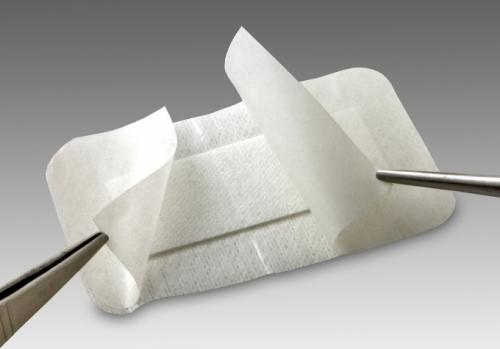

You will need
- - surgical gloves;
- - hydrogen peroxide;
- - gauze napkins;
- - adhesive plaster;
- - antiseptic.
Instructions
1
For wound treatment, prepare surgical gloves, hydrogen peroxide, alcohol, iodine or brilliant green, gauze wipes, adhesive plaster, antiseptic. All materials must be sterile. In some cases, you may need a bandage, bandage, and tourniquet.
2
First of all, put on gloves, rinse the damaged area with 3% hydrogen peroxide solution and dry with a sterile tissue. Then apply alcohol, iodine or brilliant green to the area around the wound. Disinfection of the skin should be carried out at a distance of at least 20 cm. Your movements should be directed from the wound to the periphery.
3
Try to get the edges as close as possible. Take narrow strips of adhesive tape and stick them across the wound. When treated in this way, it is recommended to keep it open. If the face is injured, the bandage from the plaster should be at least 6 days, the rest of the parts heal longer - 7-8 days. Until the wound is dry, it cannot be wetted.
4
If bleeding occurs, apply a pressure bandage to the wound. If the blood does not stop, it will be necessary to clamp the bleeding artery (apply a tourniquet). When treating wounds on the legs or arms, it is recommended to raise the limbs.
5
If the wound is large and dirty, after you stop the bleeding, disinfect the surrounding area first. Then take furazidine, lavasept, hexicone or any similar remedy and rinse the wound with a strong stream 4-5 times. After that, apply a sterile gauze pad dipped in an antiseptic on its surface.
6
Open burn wounds are treated with a three-layer dressing impregnated with furacilin. Take 1 tablet of furacilin, crush it, dissolve in a little hot water and mix with cold water. The volume of the liquid should not exceed half a glass. This wound needs to be bandaged. It will dry out and heal quickly. The bandage may stick to it as it dries. You do not need to tear it off, it will go away by itself as the wound heals. If the dressing gets wet, it will need to be changed.
7
Keep in mind that thick bandages are not recommended for open wounds (except for burns). They prevent rapid healing and create a fertile breeding ground for microbes. The less dressing it has on it, the faster it dries and heals.
When getting rid of wen (lipomas)
Representatives of another extremely unpleasant subcutaneous problem are adipose tissue, or lipomas.Visually similar to boils, they belong to the category of benign tumors and have significant sizes (from 5 to 40 mm or more), but do not form life-threatening metastases and do not cause pain or severe discomfort. And yet, such neoplasms provoke the appearance of complexes in people because they look ugly and unhealthy, especially if they are localized on the face or neck.
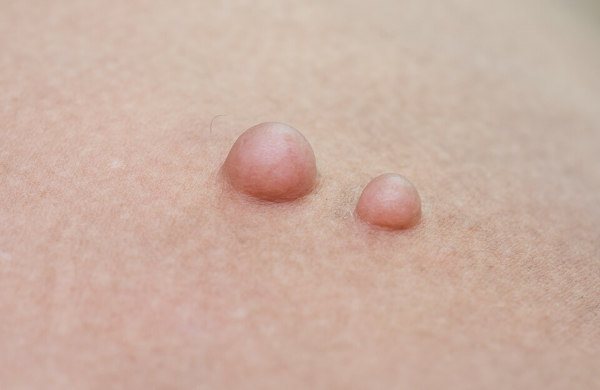

The appearance of wen is inextricably linked with improper nutrition, namely, the consumption of foods containing low-quality components. The situation is aggravated by a sedentary lifestyle, in which the decay processes in the body slow down, designed to cleanse the body of waste elements. As a result, they accumulate in the adipose tissue.
In order for the pus from the acne, which is a wen, to come out without difficulty, it is necessary to use the lower sheets of the agave, previously kept in the refrigerator for 4 days. The plant is peeled, cut lengthwise, applied to the lipoma and fixed with an adhesive plaster. The compress is changed 4 times a day. It definitely needs to be updated before going to bed. If it turns out that the lipoma was one of the superficial tumors, pus from the pimple will flow out in about 7 days. But for the treatment of deeper wen, you will need to show much more patience - such sores open up in 2-3 weeks.
Medications for draining pus
Ointments and gels that draw out pus, prevent the development of complications, promote wound healing. Local medicines stimulate the outflow of exudate, preventing the progress of suppuration.
Ointments and gels have an effective therapeutic effect, they:
- anesthetize.
- relieve inflammation.
- kill germs.
- disinfect.
- soften and repair damaged tissues.
List of drugs
To remove pus from the lesion, the following topical medications are used:
- Levomekol is a combined agent with an antibiotic and components that contribute to the restoration of the epithelium. The ointment removes pus, suppresses inflammation.
- Streptocide ointment relieves suppuration by destroying microbes. Suitable for scratches and small wounds.
- Ichthyol ointment relieves pain, draws out pus and disinfects. How to treat an abscess using this remedy: spread the ointment on a napkin, close the lesion with it, put parchment paper on top, fix it with a bandage. The interval between dressings is 8 hours.
- Vishnevsky's ointment accelerates the ripening of the abscess, helps to remove the purulent contents from the wound. Thanks to her, the damage quickly heals.
- Synthomycin antibiotic ointment is an effective remedy that is used to suppress inflammation in difficult-to-heal festering wounds. Microbes quickly get used to the effects of the ointment, so it is used in short courses.
Algorithm for treating abscesses at home:
- The skin is treated with an antiseptic (hydrogen peroxide, chlorhexidine).
- Apply ointment to the damage, cover with a napkin.
- Fix with a dressing material.
- The dressing and medication are changed following the instructions included with the medication.
How to apply aloe to a purulent wound. Aloe-based recipes for purulent wounds
Aloe is excellent for wound healing. Healing ointment can be prepared according to the following scheme:
100 ml of agave juice is mixed with 100 grams of honey. Add 5 ml of vodka to the mixture.
The ointment should be stored in a cool place. It must be applied to the skin within two days.
Aloe for youthful acne should be applied in this way:
Juice is squeezed out of the leaves of the agave. 5 ml of the drink is mixed with 5 ml of lemon juice. Add 10 ml of chamomile-based infusion to the resulting liquid. The drug must be diluted with 200 ml of water.
The resulting drink should be consumed three times a day. It improves skin condition, has refreshing and toning properties.The drug contains lemon juice, so its shelf life is about 5 days. In this case, the drink should stand in a tightly sealed glass container.
There is also such a popular recipe:
Alcohol is combined with aloe in a ratio of 1: 4. The product is insisted for at least 15 minutes.
This lotion should be applied to the problem area twice a day. It reduces the oiliness of the skin, eliminates inflammation, draws out pus.
Aloe extract injections for abscesses
Injections with aloe extract are endowed with tonic, tonic and antibacterial properties. The tool reduces inflammation, reduces tissue swelling. The medicine helps to improve metabolism at the cellular level, it activates the process of tissue regeneration.
Aloe injections are allowed to be done at home on their own. The average daily dosage is approximately 3 ml.
Agave extract can be taken orally. Adults need to drink no more than 5 ml of the product three times a day. For toddlers under 5 years of age, the recommended dose is approximately ten drops. Teenagers should take 2.5 ml of the drug three times a day.
From the agave you can to cook
and homemade ointments: other ingredients are added to the sap of the plant. For example, honey or alcohol. Homemade ointments have pronounced analgesic properties.
Aloe extract works great not only for boils. It removes irritation or redness on the skin.
A woman who uses aloe for pus need not worry about her appearance. After using homemade ointments and compresses, no ugly scars or scars remain.
How to remove pus from a wound: pharmacy ointments and folk remedies
Damage to the skin is quite common. If you receive such an injury, it is recommended to immediately treat the wound with antiseptic drugs: hydrogen peroxide, chlorhexidine, furacilin. If the infection continues to progress and pus accumulates in the wound, then pharmaceutical and folk remedies are used that can draw out exudate. Both medical and natural medicines quite successfully eliminate abscess, disinfect and accelerate the healing of skin lesions, so everyone decides for themselves what is the best way to draw out pus and what is more convenient to use.
At the same time, you need to understand that such funds are used to eliminate small external and subcutaneous injuries. With an extensive skin abscess, the treatment is carried out by a doctor. It is difficult to cope with complex wounds using only external medications. Patients in serious condition require complex therapy, and sometimes surgical treatment.
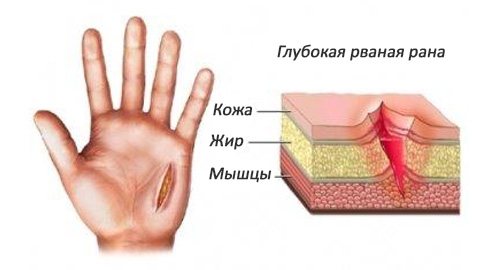

Reasons for the appearance of a boil
One of the main functions of the skin is protective. A healthy epidermis is impermeable to pathogens of various diseases: most dangerous bacteria die in an acidic environment formed by sebum and the secretion of sweat glands. But the skin cannot fully cope with its duties when the local immunity is reduced. In this case, getting on the surface of the epidermis, pathogenic bacteria (mainly Staphylococcus aureus) provoke the onset of the inflammatory process.
The weakening of protective functions can be caused by various reasons:
- increased sweating;
- damage to the skin;
- non-compliance with hygiene rules;
- exposure to aggressive chemicals.
A boil can also appear as a result of a decrease in the general immunity of the body.
Precautions
An absolute contraindication to using the plant for medical purposes is its individual intolerance. In such cases, an allergic reaction can occur, often in the form of skin rashes. Other contraindications relate to the use of the flower inside, for example, in case of gastrointestinal diseases.
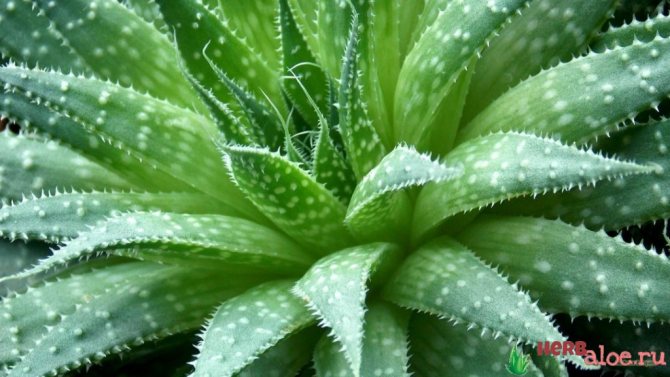

As for the means for external use, which are effective for the healing of purulent wounds, except for individual intolerance, there are no other contraindications. Including, they are allowed for the treatment of pregnant and lactating women, children. When treating a child under one year old, a pediatrician consultation is required before applying any folk remedies.
How is aloe juice useful in treating a boil?
Agave extract is a multifunctional product. It has the following properties:
- antibacterial - effectively fights staphylococci, streptococci, some types of fungus;
- antiseptic - helps prevent the formation of pus in the wound;
- anti-inflammatory;
- pain relievers - due to the content of salicylic acid, it helps to cope with discomfort;
- wound healing and regenerating - helps to restore damaged tissue;
- immunomodulatory - restores the protective function of the skin;
- pulling - helps to cleanse the wound from pus.
Treatment of a boil at home can be carried out in the early stages of the development of the disease, if there are no contraindications.
Aloe on a child's wound. Aloe-based recipes for purulent wounds
Aloe is excellent for wound healing. Healing ointment can be prepared according to the following scheme:
- 100 ml of agave juice is mixed with 100 grams of honey.
- Add 5 ml of vodka to the mixture.
The ointment should be stored in a cool place. It must be applied to the skin within two days.
Aloe for youthful acne should be applied in this way:
- Juice is squeezed out of the leaves of the agave.
- 5 ml of the drink is mixed with 5 ml of lemon juice.
- Add 10 ml of chamomile-based infusion to the resulting liquid.
- The drug must be diluted with 200 ml of water.
The resulting drink should be consumed three times a day. It improves skin condition, has refreshing and toning properties. The drug contains lemon juice, so its shelf life is about 5 days. In this case, the drink should stand in a tightly sealed glass container.
There is also such a popular recipe:
- Alcohol is combined with aloe in a 1: 4 ratio.
- The tool is insisted for at least 15 minutes.
This lotion should be applied to the problem area twice a day. It reduces the oiliness of the skin, eliminates inflammation, draws out pus.
Cooking aloe at home
You can do this:
- Cut the fresh leaves of the plant, keep them in the refrigerator for at least 10 hours.
- After that, the aloe must be cut lengthwise.
- A little iodine is dripped onto the leaf. The plant is applied to the boil, the wound is securely fixed with a plaster.
The compress must be changed about five times a day. After the boil is opened, the wound is thoroughly disinfected.
In order to get a healthy juice, you need to rinse the aloe leaves. After that, they are cut into small pieces. The juice must be squeezed out through cheesecloth, which is wrapped in several layers.
To prepare the gel, you need to cut off several large sheets of the plant. After 15 minutes, yellow juice flows out of it. This liquid must be drained. Then the pulp of the plant is removed with a spoon. It is transferred to a clean dish and whipped with a blender until a homogeneous consistency is obtained. The resulting gel is transferred to a jar and placed in a cold place. Before use, the medicine is recommended to be diluted with water in a ratio of 1: 5.
Traditional methods of treating a purulent abscess before a breakthrough
From abscesses on the skin, get rid of folk remedies. Plain onions and aloe are as effective as imported products. Here are some effective homemade recipes for draining old pus from a wound.
The flower is used to heal skin wounds. The plant has antiseptic properties and reduces the typical symptoms of inflammation. Aloe is able to draw out purulent masses from deep and superficial layers. The abscess is opened 2-3 days after the regular bandaging.
For the compress, you need a whole leaf of the plant, from which the protective film is removed. The plant is applied to the area of the skin with pus, fixed with gauze or bandage. The procedure is carried out 2 r / day. The course of treatment is 3 days. If the aloe has failed to draw out the white pus, other types of compresses are used. The use of pharmaceutical preparations is added to the procedure.
A baked vegetable can be applied to an abscess to draw out white pus from the wound. The healing bulb for the skin is prepared in the oven, in a frying pan or in the microwave. The fruit is cut in half, placed in a heating device for 10 minutes. In the oven, it is baked 6-7 at 180 degrees. Do not use vegetable oil or animal fat for pan cooking. The two halves are placed on a hot surface and baked over low heat for 10 minutes.
After cooling, the bulb is applied to the abscess with pus. The baked vegetable is fixed with circular bands of bandage. After 2-3 hours, the bandage on the skin is changed. Onions can draw out white pus in a short amount of time.
If it is not possible to bake an onion, boil it. After cooking and cooling, compresses are made.
Garlic
Garden garlic is used to treat mild boils and can draw out liquid pus from the affected dermis in 2-3 days. The main advantage of the plant is its ability to disinfect the surface of the skin.
To draw out and get rid of pus with the help of garlic, you need to peel its head from the husk and bake in the oven. The prepared raw materials are mixed with grated laundry soap, heated in the microwave. The mass is converted into a cake. In a warm form, it is applied to an area of skin with pus. After 4 hours, the garlic cake is replaced with a new one. The tool will be able to draw out the contents if it is used 4-5 r / day.
Other
To get rid of pus, use the following effective folk remedies:
- Cabbage leaves. They inhibit the development of an abscess, boil, wen. They can draw infected contents from superficial skin wounds. When the pus drains, the inflammation decreases. Cabbage leaves are washed with clean water. They must first be kneaded so that the juice stands out. Apply to the wound, fix it with a bandage from above. Compresses on the skin are changed 2 r / day.
- Potatoes with beets. Vegetable gruel effectively draws pus out of the wound. The fruits are grated, laid out on top of the cheesecloth. In this form, it is applied to the sore spot.
The mechanism of formation of a skin abscess (abscess)
Infection of lesions is caused by bacteria, fungi and protozoa. When the infection invades the epithelial tissue, an inflammatory process develops and an exudate with pus is formed. It contains protein molecules, destroyed leukocytes and macrophages (immune cells that identify and neutralize foreign bodies), dead pathogens. The state of the exudate is influenced by the stage of the inflammatory process. At the beginning of infection, it is liquid and transparent. With the progression of the infection, the substance becomes viscous, purulent inclusions are present in it, and an unpleasant odor appears. The color of the pus is greenish yellow or dirty gray. Purulent discharge acquires yellow shades at the beginning of inflammation, as well as when fat and glycogen enters the exudate.
Changes occurring in a closed wound:
- With inflammation in the lesion, blood flow increases.
- Leukocytes penetrate from the capillaries, move into the wound and destroy harmful microorganisms.
- In the focus of damage, immune cells accumulate. They produce enzymes that kill pathogens and detoxify foreign bodies. Macrophages, having fulfilled their assigned functions, die.
- An accumulation of surviving and dead infectious agents, leukocytes and macrophages forms in the wound, which leads to the appearance of pus.
- The tissues are melted by the pus.
- The wound opens, purulent contents flow out of it (the process of maturation of the abscess lasts seven days).
- The final stage of an abscess is the regeneration of damaged tissues, wound tightening with the formation of a flat surface or scar.
The purulent substance does not always come out of the abscess on its own. If pus accumulates in deep tissues, and the anastomosis of the wound is too narrow, exudate penetrates into the lower layers. In such a situation, a severe skin abscess develops, turning into sepsis - a life-threatening complication that requires serious medical intervention.
At the beginning of the development of inflammation and with a small focus, the abscess is treated with folk remedies and local medicines. With a severe form of infection and deep wounds, they resort to the help of a doctor.
A little about suppuration
Suppuration is the accumulation of purulent masses in a wound. The formation of purulent foci is accompanied by pronounced symptoms. Depending on their location and the degree of the inflammatory process, the following signs appear:
- painful sensations
- bleeding
- swelling of the tissues adjacent to the site of inflammation
- swelling
- redness of the skin around the affected area.
If you do not take action, even a small abscess begins to hurt badly over time, twitching sensations appear. Suppuration can occur at the site of any wound that does not heal for a long time: a cut, a blow, in the place of a torn boil, a pimple.
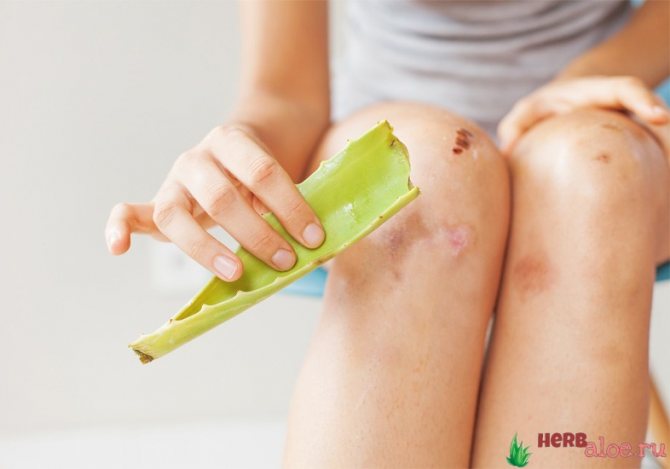

In most cases, pyogenic bacteria are found in suppurations - streptococci, staphylococci and others. The likelihood of the onset of complications depends on:
- the location of the wound
- its size
- if a person has vascular and circulatory system diseases
- the presence of other chronic diseases, such as diabetes mellitus
- age
- the general state of immunity and the body.
Efficiency
Aloe is the # 1 remedy for treating boils on the skin. Its effectiveness has been proven by many positive reviews about the use of the plant as compresses in home therapy. It must be borne in mind that aloe juice can only help with a single appearance of a boil. In the case of their frequent formation on the skin, it is necessary to find out the reason for this phenomenon (hormonal disorders, weakened immunity, concomitant infectious diseases, etc.).
Attention! If, when using aloe within three days, there is no improvement, you should consult a doctor. Otherwise, complications are possible in the form of the spread of infection to neighboring skin areas or blood poisoning.
Testimonials
Alevtina, 25 years old:
I am a very busy person. Work takes a lot of energy: there is not much time left to do household chores. A week ago I decided to iron my blouse and got a little burned with a hot iron. A second later, a sharp pain appeared in my hand. In tears, I rushed to the computer, read on the Internet about the beneficial properties of the agave. I decided to make a compress. After two days, not a trace remained of the burn. But this is not the only joyful event in my life. I finally found a new job, so now I will have more free time for myself. But I did not part with this amazing plant: I drink its extract three times a day. I feel just great: the agave increases immunity and improves sleep!
Alexandra, 32 years old:
Recently my husband got a splinter in his finger. They managed to pull it out, but a small abscess formed on the damaged area. Unfortunately, the Levomekol ointment, which has always helped in such situations, is over. The mother who came to visit said that she always makes lotions with the agave. At our house there is a beautiful pot of aloe on the window. I made a decoction according to my mom's recipe. The abscess soon disappeared, with no marks left on the finger.
Good afternoon, dear readers!
How to collect agave juice?
Homemade aloe extract can be obtained in several ways:
- Freshly cut leaves are washed in cold water.Divide into small rectangular pieces with a knife, then fold them into cheesecloth, folded in two layers, and squeeze the juice.
- Fleshy leaves are rolled through a meat grinder or interrupted with a blender. The resulting mass is wrapped in cotton cloth and wrung out.
- On one side of the leaf, peel off the skin with a thin layer and squeeze the juice with your hands.
If it is not possible to collect the agave extract yourself, you can buy it at the pharmacy. The instructions for the product indicate that it contains 80% aloe juice and 20% ethyl alcohol. The drug is not recommended for use by pregnant and lactating women.
Using aloe the right way
Aloe is a unique plant because it contains more than 200 active biological substances useful for the human body. However, they are beneficial only if used correctly, otherwise their action may be useless.
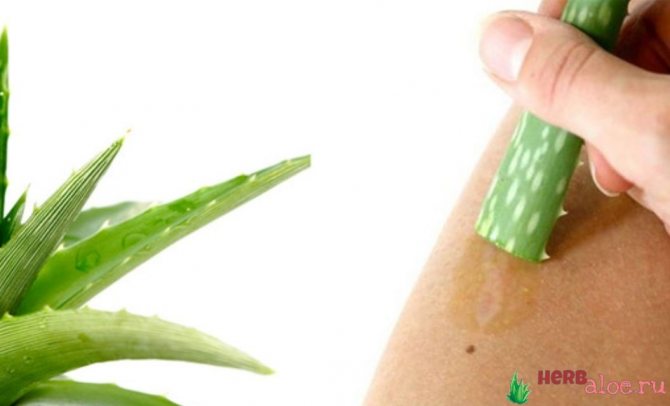

For the use of aloe on the wound to be effective, you must adhere to the following rules:
- Use only a healthy plant, if it is affected by diseases, parasites, you must first get rid of them.
- Juice is considered the most valuable; it must be obtained from fleshy, healthy leaves.
- The leaves should be fresh, if they lie down for several days, most of the useful components will cease to work.
- An alternative to fresh juice can be evaporated.
To use medicinal preparations based on flower extract, you must follow the manufacturer's instructions. For medicinal purposes, different types of plants can be used, including the tree-like aloe or agave, aloe vera, or real.
Applique recipe
Ingredients
- homemade aloe tree-like, 2-3 leaves are fleshy;
- olive oil, 1 tbsp;
- cotton pads for forming applications (as much as needed).
First, you need to chop the leaves and even slightly press them down to give more juice. Then let the resulting gruel stand for 15-20 minutes, so that the released juice begins to thicken slightly. Then add olive oil in the prescribed amount.
Mix everything, and then put the resulting mass on cotton pads.
Lotions from a plant
Aloe boil treatment is carried out in several ways. One of them is lotions that should be applied to the affected area of the body. To make the medicine correctly, you will need:
- Cut off the bottom thick leaves of the aloe.
- Rinse the leaves under running water and cut a piece slightly larger than the boil.
- Cut the selected plant fragment lengthwise and attach to the boil in the middle.
- Fix with a bandage and plaster.
- It is recommended to change the lotions every 2-3 hours and until the abscess opens and begins to dry out.
Furuncle on the face and its treatment | Face & Body Care | beauty
Baked onion
With the help of baked onions, boils can be quickly cured. Warm baked onions should be tied to the sore at night with a thicker layer so that the heat will last longer. By morning, all the rubbish will be pulled out, only the boil core will remain, which can be easily removed. The main thing is not to clog the wound later. (HLS 2010, No. 8, st / r 33)
How to cure a boil?
The tactics of getting rid of the boil depends on how difficult the inflammatory process is. Therapeutic procedures are recommended under the guidance of a physician.
The classic abscess treatment program includes:
- Antiseptic agents.
- Ointments with pulling properties: Ichthyol, Vishnevsky, Levomekol.
- Opening the inflammatory element with the subsequent removal of its contents to the outside. This procedure should be performed by a dental or maxillofacial surgeon. Attempting to drain the wound yourself can lead to the spread of inflammation to the surrounding tissue.
Aloe from tuberculosis - folk recipes from aloe
In the early stages, a boil can be cured at home using folk remedies. Aloe is considered one of the most effective.
Observance of precautions
The instructions for use contain the following information: injections with agave extract are not recommended for children under three years of age. It is recommended to refuse the use of the plant if there is an individual susceptibility to its ingredients. In the presence of a malignant tumor, the agave is not recommended. Otherwise, the neoplasm may enlarge.
Pregnant women and people prone to allergies should consult a specialist before starting treatment. Aloe, which helps from pus in the wound, is prohibited for use in severe kidney disease, liver damage.

